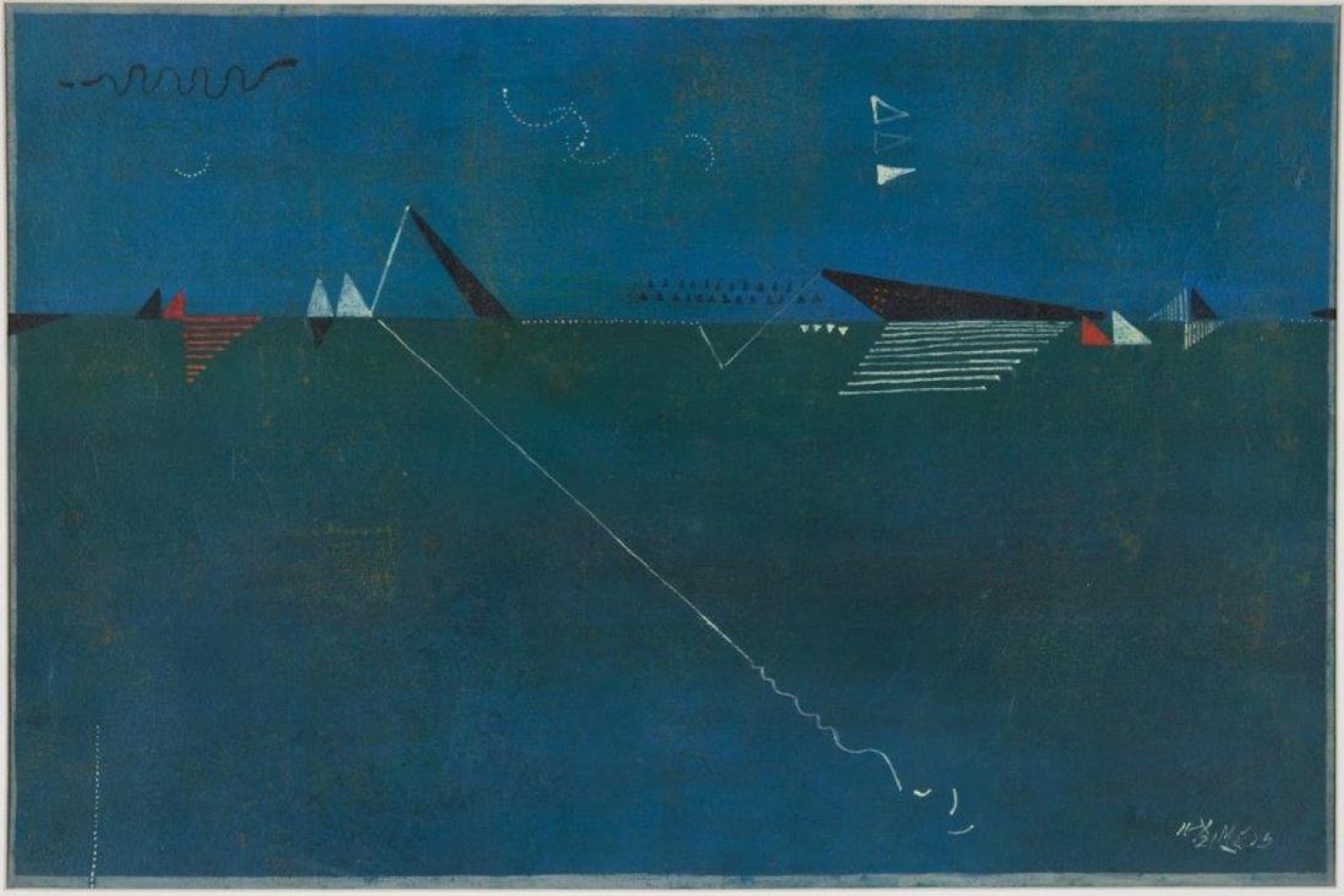
Untitled, 2016, gouache on board, knma c

Untitled, 2016, gouache on board, knma c
“Isolation is the most important factor in these paintings. You are alone with nature, and then you become part of it –you participate in it."
— Ganesh Haloi
Natural light and evanescent shadows, currents of wind changing directions, temperatures varying over the course of the day, the dispersal of energy and movement around—all attributes of the transient phenomena affecting one’s being have acutely sharpened artist Ganesh Haloi’s alertness to the transformative moments of perception. One of the lone artists from his generation, Haloi painted without being tied down by the compulsion of representing reality literally, whose works carry the essence of in-translatability. A life rich with migration experiences and travels that inspired corporeal and noetic shifts, Haloi’s artistic passage began with mindful observations of idioms of the cultural past in Mughal miniatures and the Ajanta murals, in contrast to the harsh post-Partition reality the young artist witnessed after moving to Kolkata (Calcutta) in 1950. Inspirational stories of precursors like Abanindranath Tagore and Gopal Ghose, past shows like the Bauhaus exhibition (1922-23) in Kolkata and the aesthetics of Polish poster art of the 1940s and 1950s tangentially shaped his language as a young artist, which further evolved by drawing from the modern Bengali poetry of the 1950s.
The mighty Brahmaputra river and her various moods, the marshy land and rich aquatic life would remain as mnemonic fragments whenever Haloi reminisced about his house on the riverbank in Jamalpur. The childhood memory of water entering the aangan (courtyard) with overbearing force during inundation wasespecially rooted in him and his later works. Haloi’s visual imagination stretched this primordial form of spatial enclosure into an expansive field, with the closed boundary left broken or incomplete, allowing recollections to flood in.
His practice has resisted easy classification and categorization in terms of genre, style or content. He neither claims to be a landscape painter nor a pure abstractionist. In his minimalistic works, one can register an orchestration of formal elements laid out not for simple delectation but for posing new problems. Interpretation of colour pigment on paper, with the complex methods of layering them on the surface, appear as explorations he made in a playfully decentered world. With almost hundred artworks on display, the exhibition unfolds the different phases, styles and nuances of Haloi’s art practice.
Resonating with the artist’s practice, curatorially, the show is conceived as a kaleidoscope, evoking Haloi’s inscape of shifting configurations and vantage points. The artist is invested in capturing the imperceptible quality of the experience itself, which ceaselessly forms and re-forms in the unmitigated flow of time, quite like a ‘thoughtwriter’, unfolding new and free-flowing perceptions, not confined to the artist alone. What one encounters today while looking at a vast mine of painterly evocations accumulated through 60 years or more is both a discovery and a struggle, a flux, where the surprise of life is depicted as a cryptic weave of sightings and reciting.
12th November 2022- 11th January 2023
Text Roobina Karode, curator of the exhibition